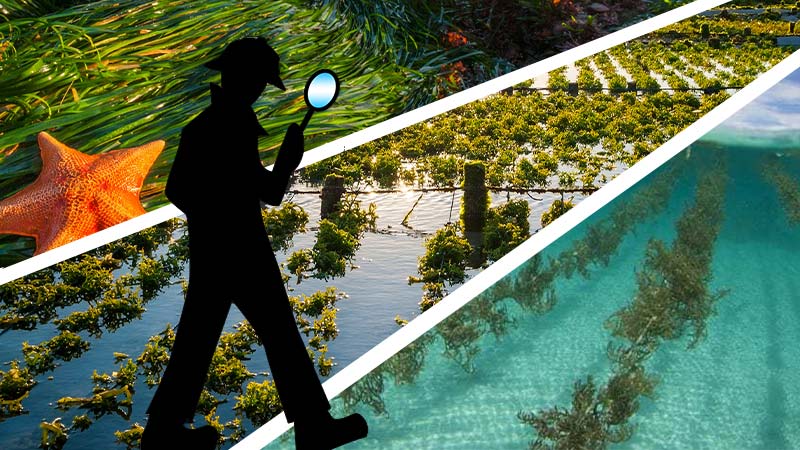This is a topic that I have been wrestling with for years now, the true story behind wildcrafted Sea Moss. How to share with you what I have learned, while not damaging the perceptions of those you and I look up to, particularly in the Sea Moss space, is a tough gig.
The debate about real and fake Sea Moss is one that has seen honest, hard working Seaweed Farmers painted as frauds.
The truth is that figuring out what it takes to grow Sea Moss isn’t as straight forward as you may expect. It has taken a lot of people a long time, and a lot of their money to get this right.
I would like to state that this is in no way intended to defame anyone, simply to highlight that even the people you and I look up to sometimes get their facts wrong.
And it is on us to do our own research for our own health and well-being too. We also need to acknowledge that Science never sleeps. Ergo, things as we know it keep on changing, and too has an impact.
The potential of being behind on current research and fact finding is something that any person who takes the platform risks. Quite often, celebrity like individuals are frequently so time poor they don’t have the capacity to build their own resources, which I acknowledge is a very big task.
As I’m close to this space, I have seen behind the curtain in a number of cases and what I’ve learned is that the Speaker doesn’t always do the work themselves.
I’ve had firsthand experiences where I’ve seen the underbelly of what it takes to create the content for a 3 day boot camp covering a range of topics.
All too often, Gig Workers are hired to create the content for seminars (often not knowing this is the final intention) which are charged out at thousands of dollars per person. And the content is little more than a simple as copy paste plagiarism executed against a host of other online resources.
If you want to test this out for yourself, try typing entire paragraphs from the materials you have from some of the workshops you may have done into any of the free plagiarism checkers online to see if you get multiple hits back. It’s a sad thing to uncover, but it happens.
This realization has caused me to lose faith in some people I have long admired. But that’s not to say they aren’t motivated by good intentions.
Their content may simply be out of date, as stated. Or their Personal Assistants may have been trusted too heavily to do the research properly.
Or they didn’t have the type of access to a world of knowledge at the time like we do today, thanks to the Internet. There’s a whole range of things to consider.
One perspective I think we can all agree on is that things don’t rest, and it feels very much like you’ve got to run just to stand still today.
It has even been said that what happens in as short a period as six weeks in the medical world is so big that it would take a Doctor more than ten years to learn it. This is where AI is making headway into the world of medicine and challenging Doctors, for better or worse. 1
So, how did we come to be here, where I’m sharing these perspectives with you? It is through a question that I get asked quite frequently. One that I find myself repeating the same answer to, with the same points over and over.
This question was asked of me the day before I read the below question shared with us by Timmy, a very welcome Visitor to our website, just as welcome as you are.
Timmy asked: “Hi, my question as I am researching would be, what is lost, in nutritional value, when Sea Moss is gotten from the rocks (sea bottom) as opposed to when it is farmed closer to the water surface? I am seeing claims that if the Sea Moss feeds off the rocks then it is more nutritious.”
Before I dive into the response to this, can we agree that the basis for the question is the derived nutritional value extracted from Sea Moss that is wildcrafted compared to Sea Moss that is sustainably farmed? If so, I would like to invite you to read on.
In response to his probing question, I would like to share this with you.
Deep Dive into Wildcrafted Sea Moss
Hello Timmy,
That’s a really good question, and there are some popular misunderstandings around quite a few aspects of what you ask.
The main point of reference that many people who ask this question have in my experience is an old archive video by a key figure in the space. If you have seen it, you may be familiar with where the transcript.
Let’s look at the transcript
Question is asked by a member of the audience about finding Real Sea Moss…
“… Ahhh, Sea Moss is known scientifically, there we go again, as Chondrus Crispus, am I right?”
Note: in this particular archived video you’ll see a sample held up at about 4 minutes in which is a thin yellow looking twig like sample, much like what we popularly know as Sea Moss or Irish Moss Seaweed today.
Chondrus Crispus does not look like this. There is a screenshot of this further on in the article.2
“… Sea Moss comes from the Ocean. It locks on to a rock. On to a rock. And from that rock, it receives it’s nutrients.”
Note: seaweed, as algae, absorb their nutrients from the water around them as they don’t have complex root systems like their terrestrial counterparts.
This is covered by the Point Reyes National Seashore Association and the lesson plan for Students and Teachers on how algae grows created by BioMara.
“… (name respectfully omitted) how could that be possible? A plant hold on to a rock? Yes.
Note: this is a factual statement. Seaweed does hold on to rocks, this is what is known as a holdfast which serves to act as an anchor, not a root system like in land-based (terrestrial) plants.
“… Scientist have yet to understand how could a plant hold on to a rock, and then give you food.”
Note: consider a snippet I would like to share with you from Sciencing explains that seaweed can grow, and therefore ‘give you food’ as a result of the cellular activity that takes place on every part of the algae where it absorbs what it needs from the water around it to grow. 3
“… Well, you know what it is? They [the Scientists] invented a word. This is the word [writes word on flip chart and then counts the number of letters in the word starting at the end of the word working to the beginning of the word]. A fifteen letter word. They [the Scientists] call it ionthropherosis. Now dig that.”
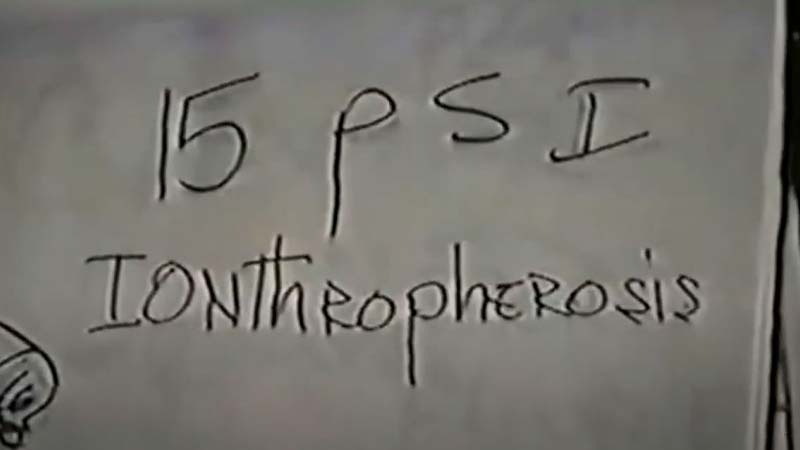
Doing your own Research
Note: I would like to encourage you to take a moment to look up ‘ionthropherosis‘ in the dictionary, encyclopedia or on a search engine.
You may find that Google attempts to correct your search and serve you results for “iontophoresis” which is not the process of a plant (or algae, as seaweed isn’t a plant, but we tend to call it a plant in our articles for the sake of relatability) extracting nutrients from a rock.
This is the process of using an electrical current to target specific areas of the body in treating excessive sweating. It essentially targets sympathetic nerves and ‘neutralizes’ them to help with hyperhidrosis.
Side note, I’m not sure how I feel about zapping nerves to neutralize them. Off-topic much? Ok, back to the transcript.
“… They [the Scientists] don’t understand the workings of God, but they gonna give it a name. That a plant has the ability to convert a solid oxide substance into a liquid digestible substance, they call it ionthropherosis. Sea Moss does that.”
Note: In all the time I’ve been around Sea Moss, I’ve never found substantive proof that Sea Moss is capable of this. As an algae it is more commonly cultivated than harvested via wildcrafting.
In fact, there are virtually no wildcrafting operations left for this species of seaweed owing to the commercial demand and the propensity for the algae to be sustainably farmed.
“… and every plant does that. But Sea Moss has iodides, bromides, it has all of the minerals. Phosphorous, which is good for the thyroid gland, which is good for the endocrine system.”
Note: One of the more common species of seaweed that is cultivated in the Caribbean and is also found in South India, Korea and a few other parts of the world has two dominant iodides.
One being Acetylthiocholine iodide, which has indicated it may be very effective in the inhibition of Cholinesterase activity which is good news for sufferers of Lewy body dementia, Parkinson disease, and Alzheimer disease. 4 5 6
The other iodide that you’ll typically find is Butyrylthiocholine iodide which has been assessed based on similar properties to Acetylthiocholine iodide. 7
These are just as present in readily accessible cultivated seaweeds as they are in lesser accessible ‘wild’ seaweeds.
The most common form of iodide you’ll find in seaweed is Potassium Iodide, and you’ll also find iodine. The benefit that a healthy intake of iodine has on bodily functions is something we are more widely aware of when it comes to thyroid function. 8 9
Bromides are very plentiful as they are found both in the soil and in the sea. There are estimated to be some 1,600 (organobromine) bromine containing organohalogen compounds that are naturally occurring in marine plants (algae) and animals alone. 10
The world of all other minerals is very expansive, and I’ve yet to find a complete analysis completed on Sea Moss that shows all of the minerals.
Therefore, it is my opinion that we popularly believe that this is true at this point. One of the more inclusive studies covering a handful of minerals assessed can be found here. 11
Phosphorous is a key element to help seaweeds grow. Without it the process of photosynthesis is more than challenging for the algae (sometimes called a macroalgae).
The practice of cultivating seaweed in open ocean waters and semi sheltered beaches has proven to yield not only better crop outputs, but also more complete mineral enriched development in the seaweed.
In fact, it is not uncommon for certain seaweed to be lacking in the minerals you are looking for when they are in a juvenile state. 12
This is where the selection of suitable mature algae is much better, if anything, when looking at the discussion around wildcrafted versus sustainably harvested.
I think that it is important to note that what is commonly referred to as pool grown is completely different to sustainably harvested or sustainably cultivated.
Seaweed that is grown in the ocean through sustainable means is grown in places that will yield a much better product compared to anything grown in a pool.
The locations are typically chosen or engineered to ensure that the waves aren’t so rough that the seaweed is battered and ripped apart.
When it comes to pools, these aren’t typically set up as exclusively for the purposes of growing seaweed. Pool systems will generally use seaweed as a part of the mechanism for maintaining the health of the water as they are in the business of farming fish, and not seaweed.
This could be where the wildcrafted Sea Moss versus pool grown Sea Moss got it’s legs.
The seaweed may end up being a byproduct of their operations, and typically, this is what you want to avoid (if you can even find it on the market). A lot of the time the visible quality of the seaweed is so poor that is used for the manufacture of fertilizer more than anything else in the operations I’ve seen.
The endocrine system is made up of a collection of glands that help with the regulation of metabolic, tissue, and sexual and reproductive function along with growth and development. The thyroid will benefit from this too. 13
However, at this point we are more interested in the parathyroid which is responsible for the production of parathyroid hormones. These help with unlocking and releasing calcium from your bones into the bloodstream. 14
If the parathyroid is not able to get what it needs it can go into a state of hyperparathyroidism and cause too much calcium to be released into the bloodstream.
This is known as hypercalcemia, and even less is known about the cause of an under-active parathyroid.15 16
Being an area of medical science that is not fully understood, there is a lot more that we will hopefully learn over time. This tiny example show that everything in our bodies is connected.
“… and it’s gonna give you energy. And it has muscle food. They call it manito. Sea Moss. Like the man made peppermint, and he made aloe vera, he made Noni juice, he made Vitamin C out of Acerola Berries. But guess what he did?”
Can someone help?
Note: If anyone knows the correct spelling for ‘manito‘ I would love to hear from you in the comments section.
Native Spanish speaking friends of mine have been unable to tell me what is meant by manito apart from something to do with the hand, or a slang term for a little sister, or maybe little brother. And there’s been little luck searching online.
I’ve always struggled with the way that some of the foods mentioned in these talks are labelled as ‘man made’ or ‘made in a lab’. Particularly when there there are reports of dried peppermint leaves being found in the Pyramids in Egypt that date back to 1000 BCE. 17
The cultivation of Peppermint in England being traced back to the late 1700’s is plausible. But archaeological evidence suggests that this is not the origin. 18
Aloe vera is a broad name applied to a collection of some 500 or more species of succulents. With what is undoubtedly a long history, aloe vera is believed to have originated from the Arabian Peninsula. 19
It found a welcome home in many other parts of the world by around 400 BCE courtesy of historic trade routes. The branching of species that have been mapped per the below are only the tip of the aloe-berg.
Noni juice is made from the fruit of the Morinda citrifolia. The tree that the fruit comes from is a part of the coffee family, and is indigenous to South-East Asia, and has been traditionally used by the Indigenous People of Australia long before the English colonized the continent. 20
In more recent times the tree has spread most notably to Central and South America. The popularization of the juice has seen the markets take off around the world.
To say that ‘the man’ made Noni juice from the fruit is a bit redundant in my opinion, as this has been used in traditional medicine and across Austronesia for hundreds, if not thousands of years.
The Indigenous People of Australia have a culture and history that is understood to go back more than 40,000 years according to various sources. 21
Acerola Berries, or Acerola Cherries certainly do contain Vitamin C. A lot like other sources on the planet, these have been cultivated to provide a quick and easy source of vitamins. 22
This is a clear fact, but I’m not seeing the issue with the fruit having a naturally high concentration of ascorbic acid as being anything to be surprised about.
If we’re looking at the production of tablet form vitamins as a point of contention, I’m 100% on board. There’s a reason why fruits have accompanying sugars and vitamins, etc. with them in a natural form.
Nature cleverly packaged these up into what was needed to ensure sufficient nutrition was delivered in the most effective way for the whole body.
“… in Boston, and you guys don’t know it. And it’s dangerous. The man went to the Ocean, and got a piece of Sea Moss. Because he knows that Sea Moss grows in the Oceans where the Sea is in constant motion.
Sea Moss doesn’t grow where the Sea stands still. It has to be in motion, and Sea Moss grows. So this man in Boston went and got pieces of Sea Moss, put it in this brine, with salt, on a machine and he moved it. The machine is constantly moving.”
Sustainability is not just about the Environment, it’s also about business longevity
Note: I can’t speak to the facts, nor can I find sufficient evidence to say otherwise to this part of the talk. There may well have been attempts to recreate an environment to better understand the growing conditions for various species of seaweed.
This has been done with Kelp in various universities. If anyone has something to pin this part of the talk to I would be very happy to see it. 23
As far as the environmental conditions that are required for Sea Moss to grow, this is true.
Too rough of an ebb and flow and the seaweed is damaged, even torn away from where it has it’s holdfast.
Too little movement in the water and the increased risk of sediment building up on the seaweed is high.
This has serious impacts on the health of the algae. Other complications can also arise when there is insufficient movement in the water. This is why Sea Moss is farmed in very specific locations. The waters have to be just right for it to grow in Nature.
When it comes to growing Sea Moss in a tank the way this is described, the cost of growing the crop would far outweigh any potential profit compared to seeding a crop in the Ocean and letting Nature do the work.
Again, if anyone can prove the existence of such an operation, I would be keen to see it. With all of the places I’ve been to over the years I’ve never seen or heard of anyone doing anything like this yet.
“… and low and behold, the Sea Moss grows very thick. Very thick and very fast. And when you get a little bit of it and you put it into a pot it gives you a whole lot of mucilage. “
Note: The average Sea Moss crop grows in the open Ocean, in seaweed farms and its natural environment between approximately 45 and 60 days. The older the algae, the thicker and fuller it is.
This older and thicker specimen naturally holds more in the way of density in polysaccahride sulfates and potential for greater mucilage. Think of it the same way as a young seedling that has yet to mature into a full vegetable. 24
“… Natural Sea Moss doesn’t give you a whole lot of mucilage. And the thallus of the Sea Moss, I mean the little strings. Thin thin thin like this, [the Speaker holds us a sample of Sea Moss] just like this.
But the other one is three times the size. And the other one three times the size it always has salt on it. Natural Sea Moss has no salt on it. And it gives you energy.”
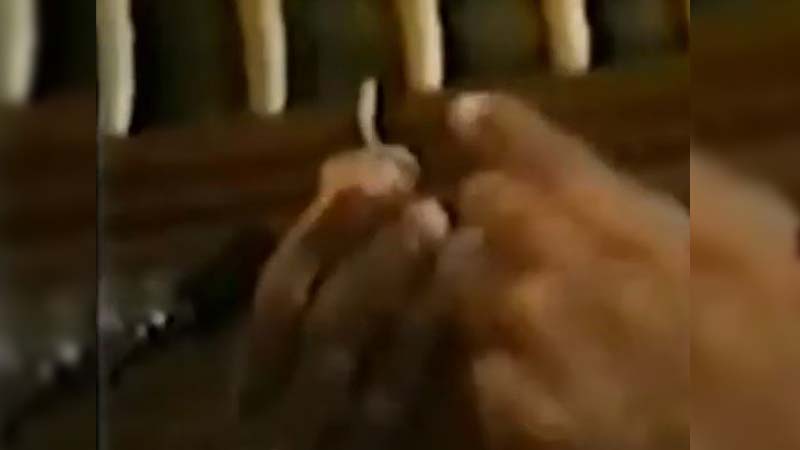
Note: With variations in spices of seaweed comes a natural variation in the results that you’ll see in a whole range of applications, not just the volume of mucilage. You also need to take into account the moisture content of the dried seaweed. The drier it is, the thinner it will be.
It also pays to keep in mind that there are some 35,000 known types of seaweed on the planet.
And with the confusion about what real Sea Moss is, this ambiguity coupled with the incorrect botanical name used in the opening leaves me with little confidence after having done my own research.
I have consistently been looking for ways to prove this talk as 100% fact, but I’ve struggled to do so. This is why I feel I need to get the key points out so someone else can share their research to support the discussion.
Having been involved in the seeding, picking, drying, processing, quality control, packaging and then using our own Sea Moss in our own kitchen I can tell you for a fact that as any seaweed dries out it naturally loses the water content it had.
Remember, seaweed absorbs the nutrients through the surface where by means of cellular activity that takes place on every part of the algae it soaks up what it needs.
This includes the salt in the salt water it is naturally growing in. The same salt water that has salt in it. This is where you’ll find naturally occurring salt on the surface of Sea Moss.
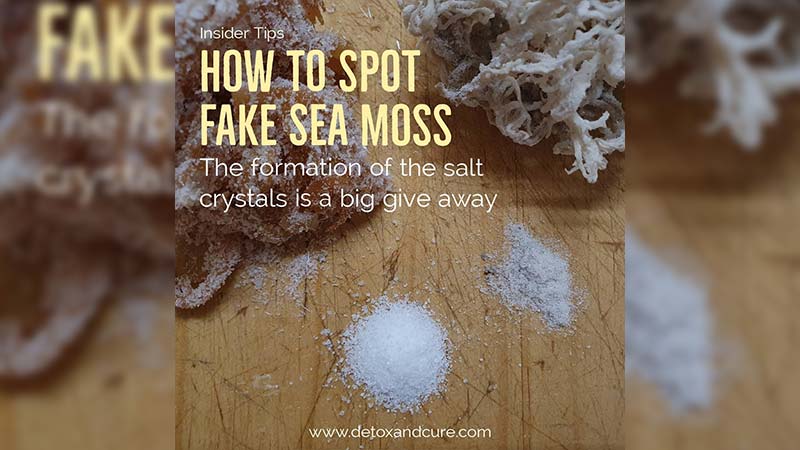
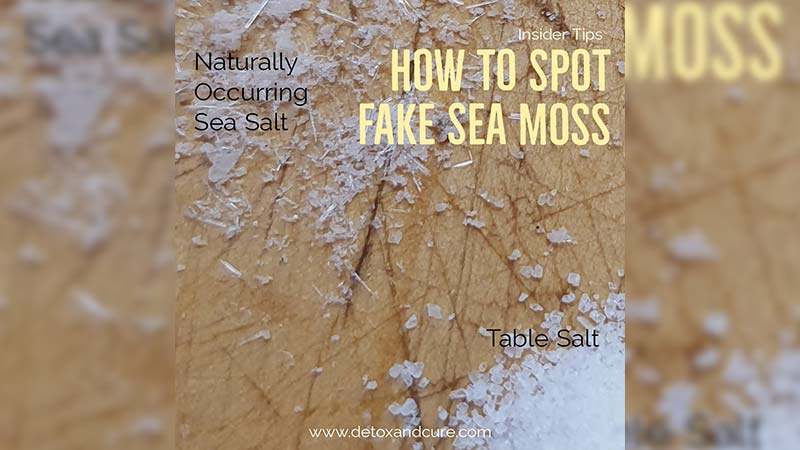
My intention with going to such detail is to highlight that you do need to do your own research and challenge everything, even what you read here. The Internet has made researching much easier than it has ever been before.
My concern is that too many people are selling Sea Moss labelled as Chondrus Crispus which isn’t, and they are making claims that are unfounded about the difference between what is grown in the Ocean under (relatively) controlled, yet completely open and natural conditions and what they are calling Wildcrafted Sea Moss.
I hope this (lengthy) response on why I believe that wildcrafted Sea Moss is a misunderstood topic helps you, and that this provides you with a broader platform for doing your own research.
Reference
- “Is AI a chance for medicine?” – A. Benani, 20 March 2020 [Towards Data Science] [Archive] ↩︎
- “Chondrus crispus Stackhouse, 1797” – WoRMS Staff, Last checked 22 February 2024 [WoRMS] [Archive] ↩︎
- “Facts About Seaweed” – M. Schader, 30 September 2021 [Sciencing] [Archive] ↩︎
- “Cholinesterase inhibitors from Sargassum and Gracilaria gracilis: seaweeds inhabiting South Indian coastal areas (Hare Island, Gulf of Mannar)” – S. Natarajan, K. Shanmugiahthevar, P. Kasi, Last checked 22 February 2024 [PubMed] [Archive] ↩︎
- “Cholinesterase Tests” – Tetsing Staff, Last checked 22 February 2024 [Testing] [Archive] ↩︎
- “Cholinesterase inhibitors from Sargassum and Gracilaria gracilis: seaweeds inhabiting South Indian coastal areas (Hare Island, Gulf of Mannar)” – S. Natarajan, K. Shanmugiahthevar, P. Kasi [PubMed] [Archive] ↩︎
- “Cholinesterase inhibitors from Sargassum and Gracilaria gracilis: Seaweeds inhabiting South Indian coastal areas (Hare Island, Gulf of Mannar)” – S. Natarajan, K. Shanmugiahthevar, P. Kasi, 29 October 2009 [Taylor & Francis Online] [Archive] ↩︎
- “Potassium Iodide Solution – Uses, Side Effects, and More” – WebMD Staff, Last checked 23 October 2024 [WebMD] [Archive] ↩︎
- “Iodine” – NIH Staff, Last checked 23 October 2024 [National Institute of Health] [Archive] ↩︎
- “The diversity of naturally occurring organobromine compounds” – G. Gribble, Last checked 23 October 2024 [Royal Society of Chemistry] [Archive] ↩︎
- “Minerals from Macroalgae Origin: Health Benefits and Risks for Consumers” – A. Circuncisão, M. Catarino, S. Cardoso, A. Silva, 23 October 2018 [PubMed Central] [Archive[ ↩︎
- “Seaweed nutrient physiology: application of concepts to aquaculture and bioremediation” – M. Roleda, C. Hurd, 11 September 2019 [Taylor & Francis Online] [Archive] ↩︎
- “What does the endocrine system do?” – K. Zimmermann, S. Wild, 10 November 2011 [Live Science] [Archive] ↩︎
- “Parathyroid glands” – You and Your Hormones Staff, Last checked 23 February 2024 [You and Your Hormones] [Archive] ↩︎
- “Hypercalcemia: What Happens If You Have Too Much Calcium?” – A. Delgado, 17 September 2018 [Healthline] [Archive] ↩︎
- “Parathyroid glands” – Better Health Channel Staff, Last checked 23 February 2024 [Better Health Channel] [Archive] ↩︎
- “Peppermint” – Encyclopedia.com Staff, 08 August 2016 [Encyclopedia.com] [Archive] ↩︎
- “Peppermint” – New World Encyclopedia Staff, Last checked 23 February 2024 [New World Encyclopedia] [Archive] ↩︎
- “Evolutionary history and leaf succulence as explanations for medicinal use in aloes and the global popularity of Aloe vera” – O. Grace, S. Buerki, M. Symonds, F. Forest, A. Wyk, G. Smith, R. Klopper, C. Bjorå, S. Neale, S. Demissew, M. Simmonds, Nina Rønsted, 26 February 2015 [BMC] [Archive] ↩︎
- “Morinda citrifolia” – Science Direct Staff, Last checked 23 February 2024 [Science Direct] [Archive] ↩︎
- “A Brief Aboriginal History” – AHC Staf, Last checked 23 February 2024 [Aboriginal Heritage Office] [Archive] ↩︎
- “Acerola, an untapped functional superfruit: a review on latest frontiers” – A. Prakash, R. Baskaran, 11 July 2018 [PubMed Central] [Archive] ↩︎
- “New England seaweed the next big thing in local food?” – J. Christian, 4 October 2015 [Boston Globe Today] [Archive] ↩︎
- “Sulfate Groups of the Mucilage of Red Seaweeds (Rhodopheceae)” – T. Akahane, S. Izumi, Last checked 23 February 2024 [Taylor & Francis] [Archive] ↩︎
Last Updated on 5 months by D&C Editorial Team
